If you need to keep cats away from your yard, it is time to look for those plants that play a significant role in repelling cats.
Plants that deter cats are utterly repugnant and are known to create an invisible fence of aromatic aversion and discourage cats from entering your garden bed.
Cat-repelling plants share similar features and are known to offer strong scents that are pleasant to humans, but cats hate those and even find them objectionable.
These so-called botanical bouncers have different shapes and sizes that produce various scents, textures, and even thorns that cats may find unpleasant.
So, if you want to transform your beautifully cultivated garden into a feline obstacle, this post will significantly help you to prevent cats from entering your space.
Characteristics Of Cat-Deterrent Plants That Keep Cats Out Of Your Garden
The cat deterrent plants have specific characteristics that make them unwelcome to feline visitors.
Here are some of the traits:
-
Strong Scents
Some plants emit strong scents that are overwhelming for cats and is effective in keeping them at bay.
-
Bitter Taste
Few plants, like Coleus canina and Rue, have a bitter taste that act as a deterrent for cats. It, therefore, discourages cats and other animals from nibbling and chewing the leaves.
-
Unpleasant Textures
Certain cat repelling plants have unpleasant textures, such as hairy or prickly leaves like Russian thistle and barberry that can repel your neighborhood cat.
These cat-repellent plants irritate cats’ skin and deter them from touching or brushing against them.
-
Toxicity To Cats
Some plants with deterrent properties are also toxic to cats if ingested, including lilies, cyclamen, and Dieffenbachia. Cats do not like these plants as it can stop cats and prevent them from being a part of your garden.
-
Other Deterrent Features
Certain tall or spiky plants, such as cattails and cacti, have tall or spiky structures that cats find intimidating or uncomfortable. If these plants are a part of your garden, it will keep cats away from your flower beds.
Also, plants like rustling bamboo help to repel cats as they produce sounds that prevent cats from entering certain areas.
11 Plants That Repel Cats From Your Yard
Now, let us explore the world of cat deterrent plants that keep cats away from certain areas.
So, here is a list of plants that cats hate.
1. Scaredy Cat Plant (Coleus Caninus)
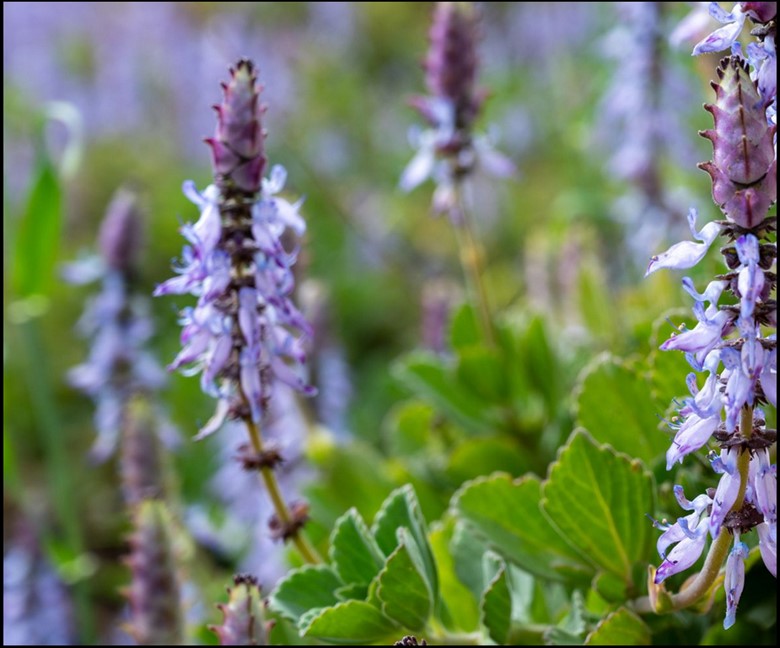
The Scaredy Cat Plant is a tender, perennial plant with gray-green leaves with exciting and unique cat-repelling properties that keeps stray cat away. This plant is also famous for gardeners seeking to deter feline visitors.
It possesses specific characteristics that play a significant role in preventing cats from getting inside your garden. This claim to fame of the plant is supposedly accredited to its ability to repel cats with its strong, unpleasant odor.
Scaredy Cat Plant emits a strong scent with pungent undertones that is unpleasant to cats and discourages them from lingering nearby. It, therefore, acts as a helpful to discourage cats from visiting your garden and also acts as a helpful tool in keeping your garden feline-free.
Scaredy Cat Plant needs full sunshine and well-drained soil to grow, producing a skunk-like scent, even more so when the leaves and blooms are touched.
Nonetheless, this is a strong contender in your fight against feline visitors, thereby making your garden less appealing to them.
2. Lemon Thyme (Thymus Citriodorus)
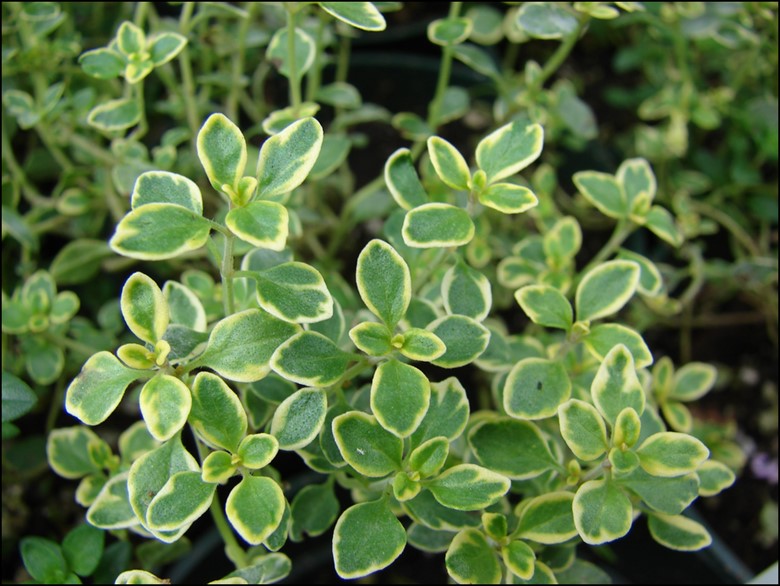
If cats are a problem, then Lemon Thyme’s citrusy charm is enough to deter the cats. As the name suggests, it boasts a strong lemon scent that is preferably liked by humans but hated by cats.
Cats hate citrus smells and hence these smells are used to deter cats. The solid and citrusy aroma is unpleasant to cats and is a practical choice for gardeners who look for a natural cat repellent.
This aroma is a strong repellent and keeps the feline intruders at bay. However, with time, this attractive tender herb grows as a creeping perennial and forms dense and highly textural mats.
This fantastic landscaping plant grows to a maximum height of 4 inches and spreads to a width of about three times its height. Lemon thyme has a scent similar to that of many citrus plants and usually emits a strong fragrance when its leaves are crushed or rubbed.
As a low-maintenance plant, Lemon Thyme thrives in well-watered soil and full sun, making it a versatile addition to your gardens, borders, or even more.
So, incorporate these plants into your garden, you will soon be able to create a fragrant and functional barrier that will abstain cats from coming.
3. Pennyroyal (Mentha Pulegium)
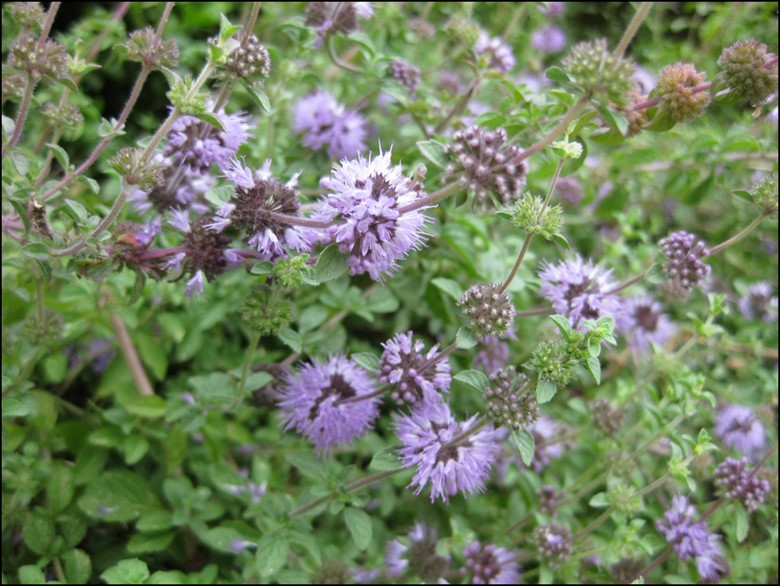
Pennyroyal, the smallest member of the mint family, is also known to repel many other insects. Cats, fleas, gnats, and many other insects strongly dislike this natural pest repellent.
This aromatic herb is the stronger herb of the mint family as well. This low-growing plant with hairy stem roots that grow about a foot tall and oval, tooth-shaped leaves is also used in cooking and emits a minty scent when rubbed or crushed.
It releases a powerful, spearmint-like scent that most cats find obnoxious and acts as a natural repellent, discouraging them from venturing into specific areas.
Pennyroyal works nicely as a border plant for cats since the roots touch the ground. It is likely to absorb sunlight and partial shade, thrive throughout the year, or even die in summer or winter.
So, to keep cats away for as long as possible, you need to cultivate these well-established stands of Pennyroyal and harvest them regularly so that they release scents.
4. Geraniums (Pelargonium spp.)
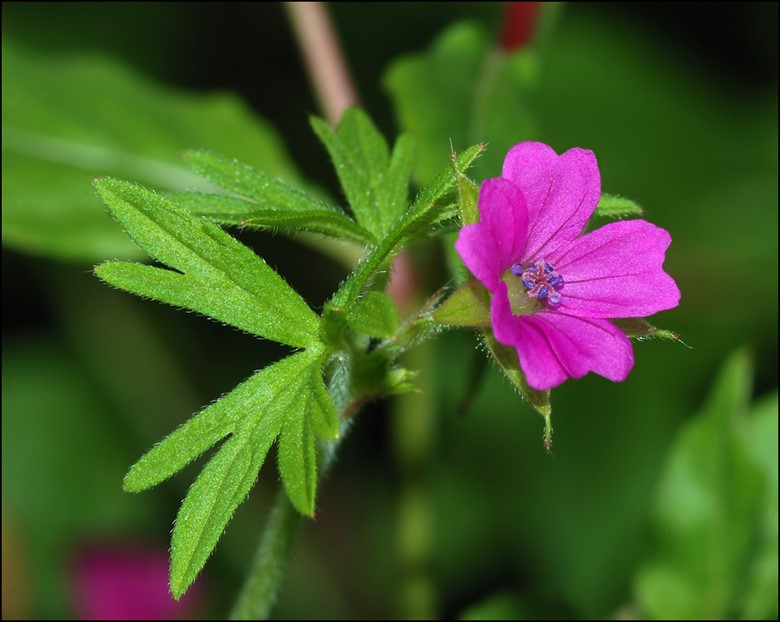
Geranium plays a significant role in deterring curious feline visitors. It emits a pleasant scent to humans but isn’t enjoyed by cats, so planting Geranium in your garden will potentially keep the cats at bay.
Also, the bright red, white, or pink flowers of Geraniums aren’t just garden favorites but play a pivotal role in discouraging most cats from entering your garden premises.
These plants grows in full sunlight and well-drained soil, and the cat-repelling mechanism lies in the essential oils concentrated in their leaves.
So, grow the charming Geraniums and help keep cats away as it effectively deters the feline intruders while subtly adding a splash of colors to your garden.
5. Curry Herb Plant (Helichrysum Italicum)
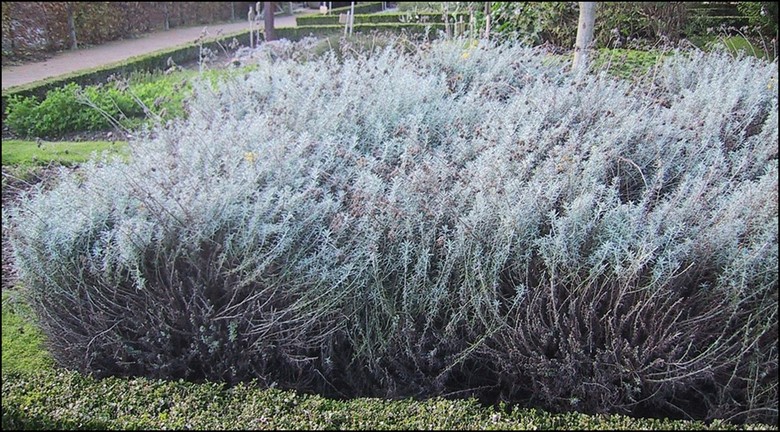
Curry herb plants are effective as a cat deterrent as they emit a strong curry scent that gives cat a sense of unpleasantness. This easy-to-care plant boasts of keeping unwanted creatures away from your garden.
This shrub grows up to 3 feet tall and has yellow-green leaves that produce small white flowers in the summer. It needs well-drained soil and a lot of sunlight.
The pungent smell of these plants deters cats from entering your garden despite providing an attractive addition to your landscape design. The aroma is a mild deterrent and discourages the cats from nibbling or lingering nearby.
The scent is similar to a curry powder that is used in Indian cuisine with woody stems and fragrant, greyish-greenish leaves that are almost similar to that of lavender plants.
Planting in large quantities effectively deters cats, deer, and other unwanted guests.
6. Common Rue (Ruta Graveolens)
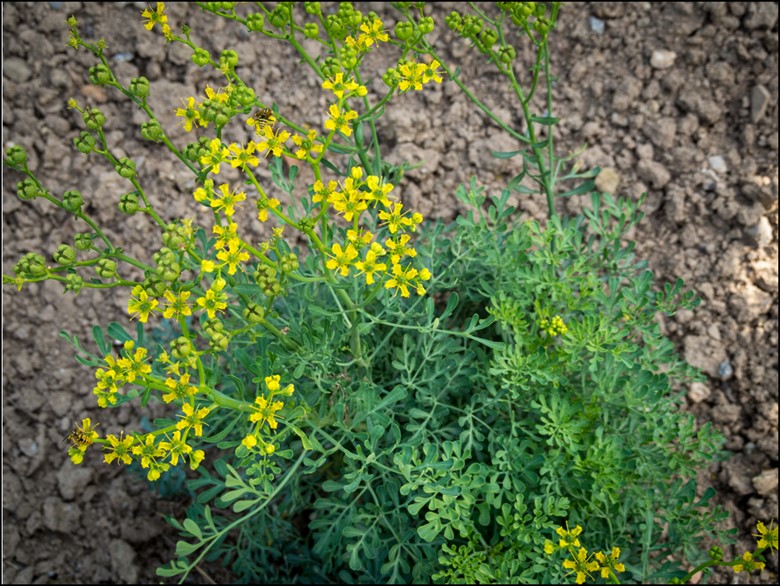
Common Rue is a semi-woody perennial plant with a nice green color and yellow flowers first introduced to Britain by the ancient Romans. It has a strong smell that cats find incredibly unpleasant and are effective deterrent for cats.
Common Rue reaches a height of up to three feet, thrives in well-drained, dry to medium-moist soils, and tolerates partial shade and poor soil.
The pungent aroma is a natural repellent, discouraging them from venturing into specific areas. The scent is known to come from the plant’s leaves and oil, which contain compounds that the felines don’t like.
Cats dislike Rue due to the bitterness of its leaves, so if the cat nibbles on its leaves, the unpleasant flavor will likely discourage them from further exploration.
Common Rue keeps cat away from your yard and is generally used in garden beds to deter cats, so keeping a neat row of this plant along the front or through the center of your garden will keep the cats at bay.
7. Rosemary (Salvia Rosmarinus)
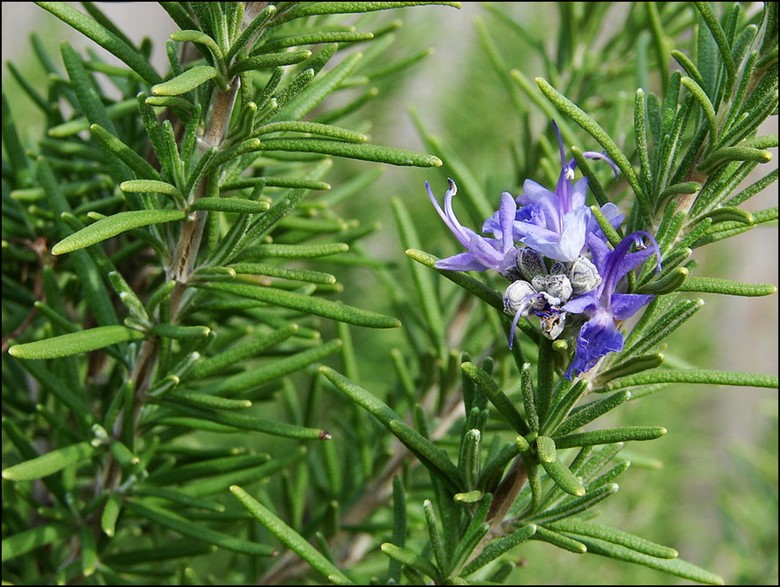
Rosemary is another cat-repelling plant with a pleasant aroma that is loved by humans but highly disliked by cats. It is a beautiful garnish for our dishes, but its overwhelming smell makes the cats turn up their noses.
It is harmful for cats and is one of the ways to keep cats away from your garden bed. Due to its pungent aroma, this culinary hero acts as a secret weapon in the war against feline intruders. Their fragrance is a natural barrier that prevents them from entering areas where the plant is present.
Rosemary has dark, leathery, and needle-shaped leaves that stand tall and upright. The length is 1 to 1.5m and can be smelled far away. This easy to grow indoor plants are perennial and last pretty long. It is best to plant them in pots and place them around your yard or other locations where cats try to invade.
The spiky rosemary leaves also act as a physical barrier and an additional discouragement to lingering or nibbling.
Thus, this aromatic, pungent, and somewhat prickly plant with needle-like leaves can be termed an effective plant to repel cats.
8. Lavender (Lavandula spp.)
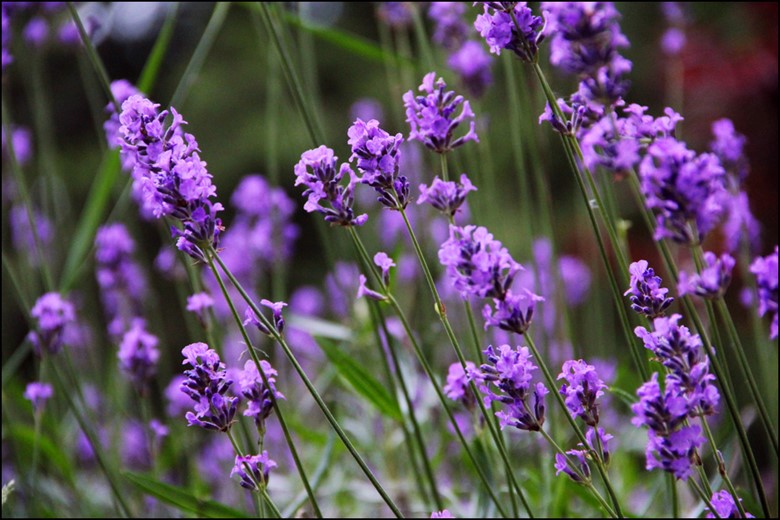
Lavender boasts of the hidden power of deterring the feline visitors. Its delicate but pungent aroma acts as a natural cat repellent and is highly repulsive for cats, even though humans like it.
These plants grow about 1 to 2 feet tall and produce spikes of purple flowers in late spring or early summer. Lavender is a versatile, fragrant, and effective cat deterrent, and its numerous uses make it an excellent choice for keeping the felines at bay.
These plants contain a non-toxic component that is generally found in insect repellents and can be planted annually.
So, you can now shield your garden by planting lavenders, as their calming scent transcends feline deterrence. You can try incorporating it into your garden design and create fragrant borders to keep the cats out of your yard.
9. Citronella

Citronella is a natural insect repellent to deter curious feline visitors from your garden.
Cats find its strong, lemony scent unpleasant and overwhelming. It is downright pungent and offensive to the felines. While the smell is a primary deterrent, its tall grass-like dense appearance also acts as a physical barrier, discouraging them from lingering or exploring further.
It requires adequate sunlight and well-drained soil and can be planted strategically around vulnerable areas to create an aromatic barrier against feline intruders.
10. Coffee Plant

Coffee, your beloved morning fuel, is a natural cat deterrent and, when grounded, is uncomfortable for cats to walk on to, creating an additional layer of discouragement.
Using ground coffee in areas where cats access, such as elevated garden beds or pots, can be an effective deterrent.
Therefore, spreading grounded coffee strategically on surfaces can act as a cat repellent; however, its temporary effectiveness and potential staining should be considered.
The abrasive and acidic nature of coffee grounds also irritates a cat’s digestive system, leading to vomiting, diarrhea, and abdominal pain.
11. Thorny Plants
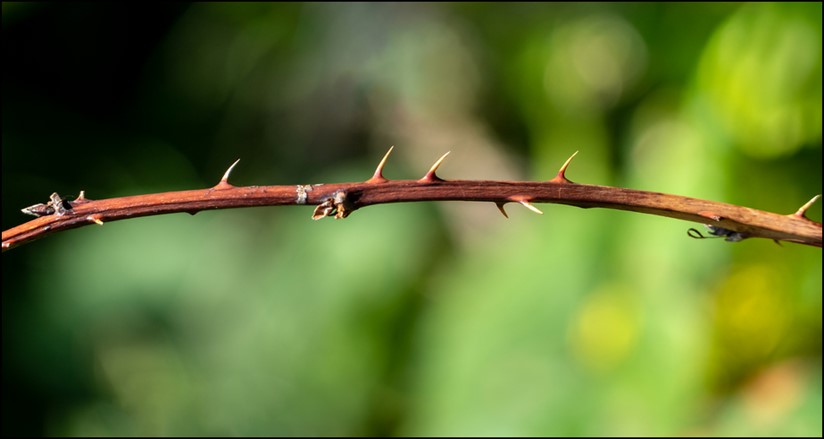
Usually, thorny plants are used as natural fences or borders to keep the cats or other wild animals away from your private property.
Cats avoid these thorny or prickly plants as they are bound to prick or scratch their skins. So, it is a natural and easy way to discourage them from entering the most tempting gardens. The discomfort factor here discourages the felines from exploring areas where these prickly plants stand as guards.
Thorny plants, when arranged compactly and strategically, prevent intruders from entering your garden, but remember that the base of this formidable fence shouldn’t have significant gaps between the lowest branches and the ground.
Specially hedges of hawthorn, holly, blackberry bushes, pyracantha, and berberis species also work well and act as a barrier and deterrent to wild animals.
How Do You Utilize These Plants In Your Garden?
Using these plants strategically in your garden will help maintain the beauty while keeping these unwanted feline visitors at bay.
With very little planning and excellent execution, you can soon create a cat-free garden using these plants.
So, here are some tips on how to use these plants:
- Use the thorny or prickly plants along the edges of your garden to create an effective barrier.
- Consider surrounding the vulnerable flower beds or vegetable patches with fragrant herbs such as rosemary, lemon thyme, and lavender.
- Scatter your garden with potted citrus trees or curry plants for a fragrant and effective deterrent.
- Combine various plants with different smells, tastes, and textures to create a much more effective barrier.
- Crush the leaves of these plants and spread them all across your garden to release scents.
Frequently Asked Questions (FAQs)
- Are There Plants That Discourages The Cats To Enter The Garden Beds?
Yes, there are certain plants that prevents the cats from entering your garden such as rue, lavender and rosemary.
- What Are Some Of The Best Plants To Deter Cats?
Some of the best plants for deterring cats are citronella, coleus canina and pennyroyal.
- Do Cat Deterrent Plants Need Special Care?
Cat deterrent plants doesn’t need any special care except sufficient water, sunlight and pest control measures
Takeaways
You can now harness the power of these natural deterrents and prioritize your approach towards a feline-free environment.
Remember, a little understanding and a well-chosen selection of botanical allies can help you go a long way in deterring unwanted feline visitors.
